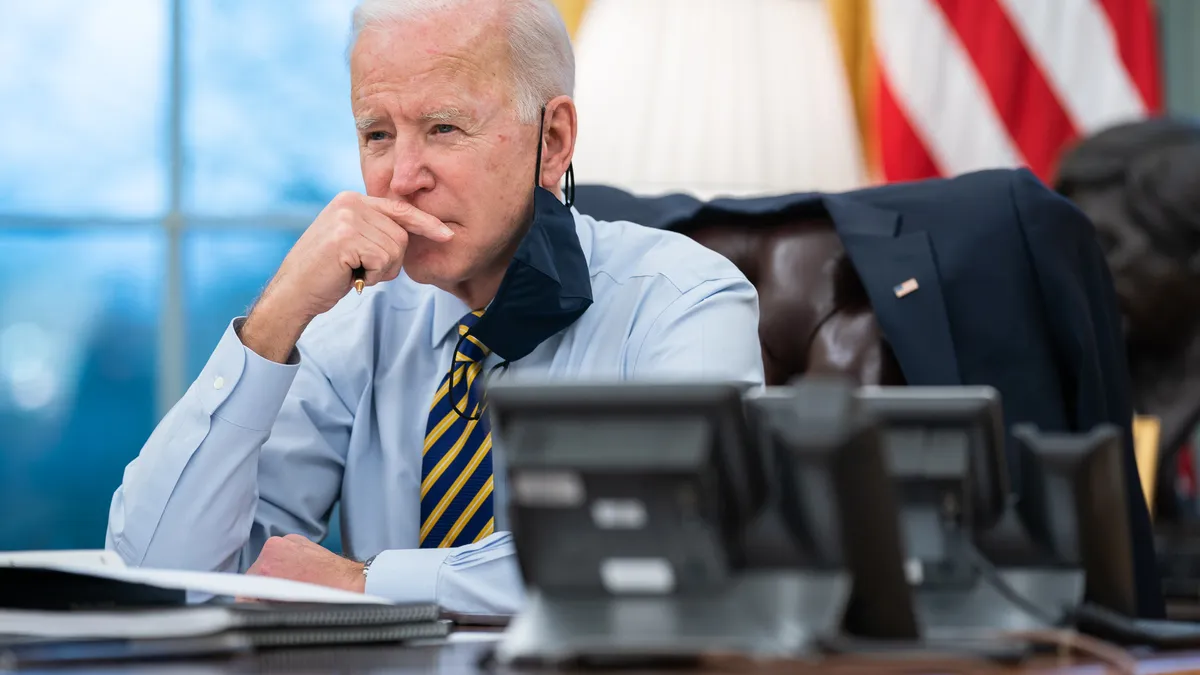The following is a contributed article from David Hart, director of the Clean Energy Innovation Policy Program at the Information Technology and Innovation Foundation (ITIF), and Stefan Koester, ITIF senior policy analyst.
President Joe Biden returned recently from his first foreign trip, during which he sought the help of allies to "win the 21st century" by countering China and addressing climate change. The United States, though, lacks an integrated strategy to take on the most important issue linking these two challenges: clean manufacturing.
In the past, manufacturing and climate have largely been considered in separate policy silos. Sometimes, they have been pitted against one another. This perspective is short-sighted. Crucial synergies between the two could open up opportunities to establish the United States as a global leader in low-carbon advanced manufacturing industries. If the nation seizes these opportunities, it will create jobs and expand investment while reducing emissions from a sector that causes at least 30% of U.S. and global emissions.
A recent report to which we contributed, published by the Information Technology and Innovation Foundation, Boston University Institute for Sustainable Energy, and Fraunhofer USA’s Center for Manufacturing Innovation, details how the United States can rebuild a robust domestic manufacturing sector and tackle climate change by leveraging its considerable strengths in science, technology and innovation.
To make the most of the clean manufacturing opportunity, the federal government will have to act more strategically and forcefully than it has in the recent past. It must adopt robust policies with long time horizons, including timely public support for technology demonstration and early deployment in collaboration with private sector partners. Crucially, policymakers will need to carefully target federal investment, concentrating resources on industries and technologies in which domestic producers are most likely to succeed against international competitors.
Such a strategy must overcome two chronic obstacles to U.S. innovation. First, good ideas have to be turned into real products and avoid perishing in the so-called "commercialization valley of death," which is far more severe for manufactured goods than for software and apps. Second, products that survive and grow to maturity must avoid the "innovate here, produce there" cycle — "there" most frequently being China — that has plagued U.S. manufacturers over the past twenty years.
The ITIF-BU-CMI report, which was informed by four expert workshops as well as over 40 interviews with a diverse group of experts and stakeholders, identifies four industries that could become important elements in an integrated U.S. climate and manufacturing strategy.
The first is hydrogen production. Hydrogen could displace emissions from industry, power and transportation, but current production methods are very carbon-intensive. Heating, cooling and drying equipment is the second. These end uses cause about a sixth of U.S. emissions. Innovations could cut these emissions radically while winning global markets for domestic producers. Chemicals production is another emissions-intensive industry. New materials made with new methods, including bio-based production, could tap U.S. strengths to provide global leadership. Finally, protein alternatives to meat and dairy products are starting to catch on, displacing emissions from agriculture. In this sector, too, U.S. producers have a chance to build on existing strengths to seize international markets.
These four opportunities are just a few of many that have largely been overlooked in the emerging clean manufacturing policy debate. Each would tackle large sources of greenhouse gas emissions that are difficult to abate. Each would stretch established U.S. capabilities and assets in promising new directions. And each promises to become a major export business as global markets for clean products grow exponentially in the coming decades.
The Biden administration has made climate change and reshoring American manufacturing central issues in its "build back better" agenda. To make good on its twin goals of expanding the middle class with high-paying manufacturing jobs while simultaneously creating a cleaner and more resilient economy, the administration will have to break the silos that have divided these two issues in the past. An integrated clean manufacturing strategy will pay dividends for both the economy and the global environment.













